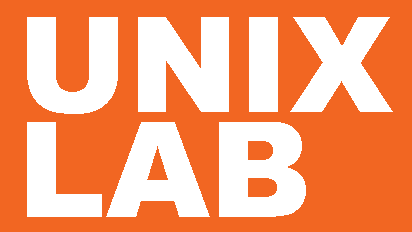Aspen HYSYS: Advanced Process Modeling Topics
Course ID : EHY202
Duration In-class (в days) : 2 days
Duration Online : 2 days
Сurriculum : in-class, Virtual Instructor-Led Training - ONLINE
Delivery
:
15.04.2025 - 24.04.2025
Price : $1 290
Overview
Learn how to use and apply advanced modeling techniques to enhance new and existing Aspen HYSYS flowsheets. To achieve your sustainability goals, you will also find resources in energy savings with Activated Energy Analysis, CO2 emissions report, Hydrogen production, Green H2/Ammonia production, and CO2 capture using Amine.
This course will help you prepare for the certification exam and the exam fee is waived with this course.
Learn how to use and apply advanced modeling techniques to enhance your simulation. Create models that emulate plant conditions. Create custom column templates, including non-standard configurations. Optimize process conditions to meet one or more process constraints. Perform complex calculations on flowsheet variables using the HYSYS Spreadsheet. Integrate rigorous heat exchanger models into a standard flowsheet. Use the Depressuring Analysis to predict pressures and temperatures inside process vessels during pressure let-downs and emergency conditions.
Audience for this course
- Process engineers who need advanced skills for more complex modeling tasks
- Current HYSYS users looking to build upon their knowledge of basic steady-state procedures in Aspen HYSYS
Objective
- Instruction on key topics
- An experienced instructor will select an appropriate order in which to present the modules
- Discussion about the general approach and the key elements for successful simulations
- Instructor-guided demonstrations of various features
- Comprehensive modeling-based workshops covering all key course topics
- A full set of detailed course notes on all topics is provided
Prerequisites for this course
- Previously attend EHY101 Aspen HYSYS: Process Modeling training course, or
- Familiarity with basic Aspen HYSYS steady-state process modeling techniques
Outcomes
- Create custom column configurations
- Perform complex calculations and analyses using the Spreadsheet operation and Case Study tool
- Learn how to optimize your Aspen HYSYS simulation
- Model liquid carryover and imperfect separation
- Simulate vessel depressurization and complex relief scenarios
- Build PSV Datasheets
- Model Multiphase pumps and Wet gas Compressors
- To achieve your sustainability goals, you will also find resources in energy savings with Activated Energy Analysis, CO2 emissions report, Hydrogen production, Green H2/Ammonia production, and CO2 capture using Amine
Outline
Getting Started
- Apply Aspen HYSYS simulation-building techniques to build a turbo expander/fractionation plant model
- Use the LNG Exchanger operation to simulate multi-pass heat exchangers
- Link process variables using the Set logical operation
- Apply physical properties via the Correlation Manager
- Workshop: Construct a comprehensive Turbo Expander/Fractionation Plant model
Advanced Columns
- Build customized column model configurations in Aspen HYSYS
- Introduce efficiency by discussing theoretical versus actual stage calculation approaches
- Perform hydraulic calculations on column trays and packing using the Aspen HYSYS- Column Analysis
- Workshop: Customize standard HYSYS column models for more detailed condenser and reboiler modeling and investigate the influence of stage efficiencies and column internals on tower performance.
Real Separators
- Model separators to include carryover and better account for imperfect separation
- Predict the effect of vessel geometry and secondary separation devices on mitigating liquid carryover
- Workshop: Define and predict carryover for a HYSYS separator based on defined process conditions, vessel parameters, and secondary separation devices
Safety Analysis Environment
- Identify HYSYS Safety Analysis Environment as a comprehensive, process-wide pressure relief modeling tool
- Size and rate pressure safety valves (PSVs) for single or multiple relief scenarios
- Demonstrate how to setup and report results from PSV calculations in the Safety Analysis Environment
- Workshop: Perform pressure safety valve (PSV) sizing calculations for various relief scenarios and generate compliance reports
BLOWDOWN™
- Use BLOWDOWN™ in Aspen HYSYS to predict process conditions inside vessels and associated valves during pressure let-downs and emergency scenarios
- Size single pressure safety valves and blowdown valves to safely meet the relief conditions in your process
- Workshop: Use BLOWDOWN™ Analysis to size a valve for vessel blowdown and rate a relief valve for a fire case
Acid Gas Cleaning
- Identify different Acid Gas Property Packages
- Discuss how the Acid Gas Property Packages addresses the challenges of modeling acid gas cleaning processes such as electrolyte thermodynamics, column non-ideality, and solvent make-up
- Workshop: Model an acid gas sweetening process using mixed amines and study the effect of introducing a second amine to a blend
Optimization
- Review optimization techniques and options in Aspen HYSYS
- Use the Spreadsheet operation to define an objective function for the Original Optimizer
- Discover the Hyprotech SQP Optimizer as an alternative to the Original Optimizer for more complex calculations
- Workshop: Use the available optimization methods to maximize profit in a Turbo Expander/Fractionation Plant
Equation-Oriented Simulation
- Demonstrate Equation Oriented (EO) modeling in Aspen HYSYS V11.0
- Demo: Convert an existing case to EO and synchronize results
Optional Topics Reactors
- Introduce the available reactor unit operation models in Aspen HYSYS
- Create chemical reactions and reaction sets
- Workshop: Model a simplified synthesis gas production flowsheet using a variety of reactor types
Sulsim
- Discuss the modified Claus process, the reactions involved, and how to optimize its conversion
- Use Sulsim’s empirical models to develop predictive and fully-rigorous simulations of the sulfur recovery process
- Introduce various Sulsim unit operation models and optimization techniques
Workshop: Model a Sulfur Recovery Unit (SRU) by configuring the thermal and catalytic stages using the Specialized Sulfur Recovery Sub-Flowsheet tools and increase the overall performance using the Air Demand Analyzer




